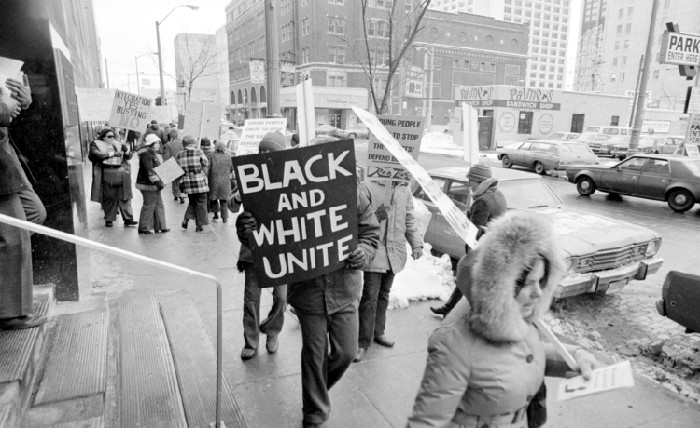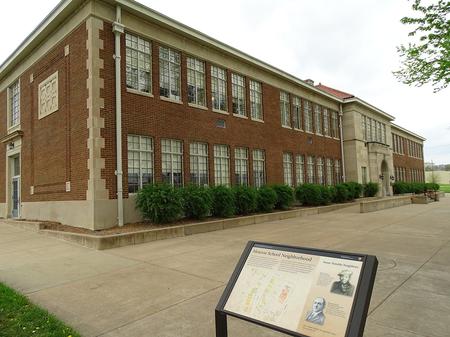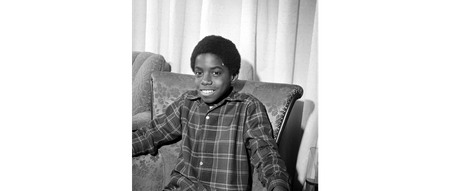The Fight for a Right to Education: How the Courts Have Shaped Schools and Society
There is nothing in the U.S. Constitution that establishes a right to education. But the fight, sometimes broadly, sometimes under very particular circumstances, continues.

As part of 101.9 WDET’s Book Club, we’re inviting the Detroit region to examine and discuss the text that impacts every resident of the United States: The Constitution. Whether you’re revisiting the documents or reading them for the first time, join us in reading along and engaging in civil conversations with your community.
In the United States, parents are required to send their children to school. But there is nothing in the U.S. Constitution that professes a right to education. However, the courts have weighed in on the rights of student in ways that shape our experiences in the classroom and beyond.

Brown v. Board of Education is perhaps the most famous education case in history. In the 1950s, the NAACP filed a class action suit on behalf of Black children in four states. It argued against the “separate but equal” standard established by Plessy v. Ferguson in 1896.
The Supreme Court ruled unanimously that the Equal Protection Clause in the Constitution was violated when Black children were not allowed to attend white schools.
Brown v. Board of Education wasn’t about education per se, says Kefentse Chike, a lecturer on African American Studies at Wayne State University. It was about segregation.
“It made it illegal to discriminate or segregate against people based on color, race, religion,” Chike says. “So, the idea was that this would give Black people and other people access to public accommodations like schools, stores, businesses and other public accommodations — restrooms and things like that.”
Chike says the NAACP litigation director at the time — Charles Houston — likely chose to focus on education for strategic reasons.
“So maybe [he] saw this as having a double effect,” Chike says. “That not only would it break down — at least in theory — the barriers of segregation, it would help to create a pathway for people of African descent to have more access to the economy.”
“So, the idea was that this would give Black people and other people access to public accommodations like schools, stores, businesses and other public accommodations — restrooms and things like that.” — Kefentse Chike, African American studies lecturer at Wayne State University
But the Brown ruling accomplished more outside of schools than within.
“Because although Brown v. Board of Education was supposed to resolve integration as a practical matter, it didn’t,” says Bruce Miller, who was legal counsel for the Detroit NAACP in the ’70s when another case tried to advance the fight for school integration.
To be clear: Milliken v. Bradley was not argued by the NAACP. In private, Miller says, the organization didn’t even support the case.
“It was a bad idea. It didn’t work. And eventually, the courts knocked it out,” says Miller.

The Milliken case argued policies by both Detroit Public Schools and the State of Michigan were designed to keep city schools segregated. When the federal appeals court decided that was true, it had to find a resolution particular to Detroit.
Then Michigan Attorney General Frank Kelley described the lower court’s discussion when he argued the case before the Supreme Court:
“Repeatedly questions were asked by the court, and I quote, ‘how do you integrate a school district where the student population is — let’s make a guess — 85 to 95 percent Black,’ close quote. Another reference — quote, ‘there aren’t enough white students to go around,’ close quote.”
The appeals court decided that because the district was majority Black and because of housing patterns, school integration could not be successful if the resolution were limited to just the Detroit school district.
The appeals court demanded public schools throughout Wayne, Oakland and Macomb counties participate in the integration plan.
“‘How do you integrate a school district where the student population is — let’s make a guess — 85 to 95% Black.” –Michigan Attorney General Frank Kelley, quoting the Court of Appeals in Supreme Court argument
That ruling was appealed to the U.S. Supreme Court where the majority said it was unfair. There could be busing within Detroit, but other districts could not be forced into an integration plan with Detroit.
Justice Thurgood Marshall wrote a dissent in the case where he argued a Detroit-only plan would hasten the white flight that made it a majority Black school district.
Listen: Thurgood Marshall’s full dissent in Milliken v. Bradley.
Marshall wrote: “Under such a plan white and Negro students will not go to school together. Instead, Negro children will continue to attend all Negro schools. The very evil that Brown was aimed at will not be cured, but will be perpetuated.”
So, school segregation that happened because people lived in different communities was protected, while segregation within communities was ruled unconstitutional.
Then-NAACP legal counsel Bruce Miller says the ruling did more than encourage more white people to leave Detroit.
“The effect was disastrous,” Miller says. “And Macomb County — we turned a lot of Democratic working-class people into the famous Reagan Democrats that had a very deep and long lasting political effects.”
Bruce Miller, former counsel for the Detroit NAACP, reflects on the local controversies that formed the backdrop for Milliken v. Bradley.
In 2016, a group of Detroit Public Schools students sued the State of Michigan saying that under emergency management the state created conditions that kept the students from being able to access literacy.
Bruce Miller — the same Bruce Miller who was legal counsel for the Detroit NAACP in the ’70s — was local counsel for Gary B v. Whitmer.
“We discovered that some classrooms had temperatures in excess of 100 degrees because there was no air conditioning,” Miller says. “That water fountains didn’t work. That in the winter time, it was so cold that the kids came to school wearing their overcoats in their classroom. There were vermin.”
“Just terrible conditions. And in order to learn, you have to have an atmosphere that’s conducive to learning.”
“There were vermin. Just terrible conditions. And in order to learn, you have to have an atmosphere that’s conducive to learning.” — Bruce Miller, local counsel for Gary B v. Whitmer
Miller says the case did not argue students had a right to an educational outcome. In other words, it was not arguing that schools had to succeed in making every student literate. It was arguing that schools had to provide students with access to literacy. They had to provide the environment and the tools that allowed students to learn to read.
The appeals court agreed. It said there was a protected constitutional right to access literacy.
But then, the case was sent back to the Sixth Circuit Court of Appeals for a decision “en banc” — which means all of the working judges in the circuit got to vote.
They voted to vacate the decision. The larger group said there is no right to literacy.
“There is one exception to the United States Code of a right to an education,” says Pete Wright, a lawyer and author.
“If a child has a disability, such that the child becomes eligible for special education services … a disability that typically must adversely affect educational performance such that the child needs special education and related services … that child, yes, is entitled, by federal law, to a free appropriate public education.”
“There is one exception to the United States Code of a right to an education.” –Pete Wright, lawyer and author
Wright runs Harbor House Publishing and the website Wright’s Law with his wife. They publish books about special education law and train parents, educators and legal professionals.
He says the Individuals with Disabilities Education Act requires states to require schools to develop individual educational plans — or IEPs — for students who need special education services in order to access certain federal funds.
“Before the law was passed in 1975, if a child had a disability — we’ll say the child was in a wheelchair — and the public school did not have elevators and did not have ramps and that kids classrooms by age and grade were on the second floor, that child was not allowed to attend school,” says Wright. “And what schools traditionally did around the country is they go to the parents and say ‘your child is suspended,’ or the child is expelled — not for behavior reasons — but for financial reasons, because they could not afford to educate the child.”
So, the Individuals with Disabilities Education Act provides children with IEPs the right to education as long as states and schools accept that money.
Whether and how often that “right” results in a good education is certainly hotly debated. Wright says he has lots of stories of parents and students who haven’t receive consistent or appropriate educational support.
But the fight to establish a right to education, sometimes broadly, sometimes under very particular circumstances, continues.
Next month, the Tenth Circuit Court in Denver will hear a case that argues there is a constitutional right to in-person learning that was violated by school closures during the coronavirus pandemic.
Join WDET in reading the Constitution.
This summer, we invite you to get involved as we explore our nation’s founding document.
Sign up to get your free pocket Constitution
Trusted, accurate, up-to-date.
WDET strives to make our journalism accessible to everyone. As a public media institution, we maintain our journalistic integrity through independent support from readers like you. If you value WDET as your source of news, music and conversation, please make a gift today.
